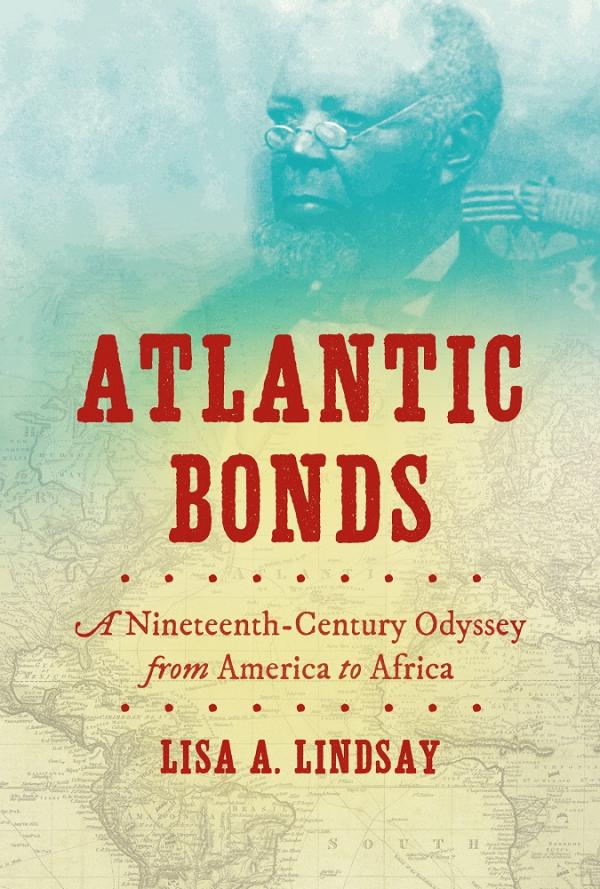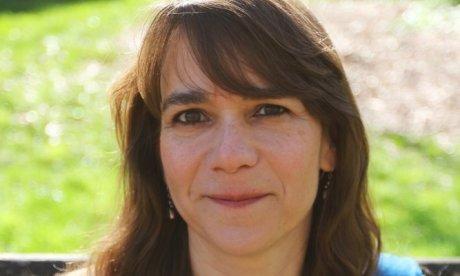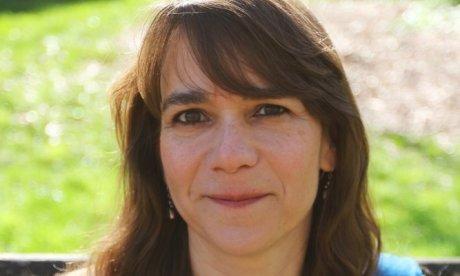Uncovering Atlantic Bonds: A Q&A with Lisa A. Lindsay

Atlantic Bonds: A Nineteenth-Century Odyssey from America to Africa (The University of North Carolina Press, 2017)
Copyright: Courtesy University of North Carolina Press, Jacket illustration: James Churchwill Vaughan; photograph courtesy of Rotimi Vaughan. Vintage map of world 1831: © javarman3; iStockphoto.

Atlantic Bonds: A Nineteenth-Century Odyssey from America to Africa (The University of North Carolina Press, 2017)
Copyright: Courtesy University of North Carolina Press, Jacket illustration: James Churchwill Vaughan; photograph courtesy of Rotimi Vaughan. Vintage map of world 1831: © javarman3; iStockphoto.
“The archive can bring the researcher into another world,” says Lisa A. Lindsay, author of the recently published book Atlantic Bonds: A Nineteenth-Century Odyssey from America to Africa. With support from a 2012 NEH Fellowship, Dr. Lindsay pieced together the world of James Churchwill Vaughan, a free African American whose unique experiences on both sides of the Atlantic tell a gripping story of captivity and revolt, perseverance and hard-won prosperity. Dr. Lindsay’s research took her from South Carolina to Nigeria, Liberia, and the U.K. in search of scattered clues hidden in dozens of archives and collections.
Atlantic Bonds, I found, is not just a history of Vaughan, but a snapshot of an era of global trade, racial hierarchies, and conflict. Vaughan’s story illustrates the complexities of freedom in both West Africa and the American South and sheds light on how colonialism, slavery, and the African diaspora shaped the lives of real people and the legacies they left for their descendants. By integrating scholarship with narrative, Dr. Lindsay humanizes the struggles and successes of “Church” Vaughan.
I had the opportunity to catch up with Dr. Lindsay and discuss how she uncovered Vaughan’s world.
~~
JD: What initially drew you to the life of James Churchwill Vaughan?
LL: I first learned about Vaughan by chance, when I had just published a history of gender and colonialism in Nigeria and was preparing for another research trip there. One of the materials I read concerned a female activist in mid-twentieth century Lagos named Kofo Ademola. I was interested in her efforts, but what really made me sit up in my chair was a cryptic reference to her ancestry. Ademola, I read, could trace “her origins back to an Afro-Cherokee slave of Egba descent in North Carolina and a Benin princess….” What was their story, I wondered?
The answer, it turned out, was remarkable. Mrs. Ademola’s grandfather James Churchwill (Church) Vaughan was born in 1828 to a freed African American slave and his part-Native American wife. Twenty-five years later, on the eve of the American Civil War, Vaughan set out to fulfill his father’s dying wish: that he should leave South (not North) Carolina for Africa. After moving first to Liberia, he continued nearly 1,000 miles further east to “Yoruba country,” now southwestern Nigeria. Over the next forty years, Vaughan was taken captive, served as a military sharpshooter, built and rebuilt a livelihood, led a revolt against white racism, and founded a family of activists. He witnessed wars that fed the Atlantic slave trade, the effects of foreign antislavery initiatives, the beginnings of missionary Christianity, the expansion of Lagos as a commercial metropolis, and the imposition of British colonialism. And he kept in touch with his relatives in America, who were embroiled in their own struggles for survival, prosperity, and dignity. Politicians, diplomats, entrepreneurs, and educators, the Vaughans of modern Nigeria and the United States have maintained contact with one another over the past century, remembering their forefathers in ways attuned to their own times.
JD: Concrete evidence about J.C. Vaughan’s incredible life, including his journey from America to Africa, is hard to find. Could you describe some of the biggest challenges you faced in piecing together Vaughan’s biography from a fragmented historical record?
LL: From the start I knew this could not be a conventional biography, because Vaughan left behind scant written evidence of his own actions and thoughts. Neither was there a cache of, say, legal or Inquisition records of the kind historians have used to construct the life stories of non-elite individuals. So my research began from two questions: who might have encountered Vaughan, and who might have remembered him? The first question brought me into the records of South Carolina planters, American and British missionaries in Africa, the American Colonization Society, and the colonial government of Lagos, among others. For the second, I looked for papers of just about every Vaughan descendant in Nigeria or the United States I could identify. Fortunately, many of them were public figures, and their papers have been preserved. Yet historical memory and family legend also carry their own vexing methodological issues, as I describe further below.
Because I was assembling and interpreting shards of evidence, even basic questions of Vaughan’s life story emerged slowly. Why did he go to Liberia, for instance, when no one else in his family did? What did he do there? In Yorubaland, how did he escape after he was captured in the Ibadan-Ijaye War? Was his wife really a Benin princess? Did he ever reunite with his family in South Carolina? And to what extent was his migration to Yorubaland a literal homecoming, as his descendants insisted?
JD: You begin your introduction by discussing an article from Ebony magazine in 1975 that repeated a false assertion that Church directly established ties with his long-lost relatives in Yorubaland, thereby reconnecting the bonds broken by the slave trade. In your research, how did you distinguish between reliable evidence and misinformation?
LL: The 1975 article makes a surprising and satisfying claim about Church Vaughan’s African ancestry. To my intense disappointment, however, I found documentary evidence that shows the claim to be untrue. Nonetheless, living Vaughan family members on both sides of the Atlantic have embraced the Ebony version as authoritative and have passed it down to younger generations. Indeed, when my initial interviews corroborated the Ebony version, I took it as evidence that the magazine reporter got the story entirely right! Instead, though, we have a reminder of the ambiguities of both oral and documentary history: the current oral history of the family is based not on an unbroken chain of transmission over the generations, but on a document produced through its own historical process.
…Family stories, like all histories, have their origins and their purposes. Once I realized that the story Vaughan descendants recounted to the magazine’s reporter was contradicted by written evidence, I wanted to know about its origins. What could a family legend reveal not only about the lives of its members, but about the larger histories they were part of? In the end, then, even an inaccurate account entailed “reliable evidence”—the question is, reliable evidence of what?
JD: Your research relied on extensive archival research on multiple continents. For someone who is unfamiliar with the process, what is a typical day at the archives like? How do you know what to look for, and where to find it? Are you ever surprised or confused by what you find?
LL: The term “archive” can apply to a range of research sites—from national repositories holding government documents to specialized libraries containing a mix of published and unpublished material to bundles of papers kept in someone’s home. Researching Atlantic Bonds brought me into all those kinds of archives, and so the experience varied. The British National Archives and the U.S. Library of Congress are brightly lit, climate-controlled, and efficient if impersonal; smaller, more specialized repositories like the archives of the Southern Baptist Convention’s Foreign Mission Board in Richmond, Virginia, have the researcher sitting at a microfilm reader alongside four employees in cubicles doing their own work, stopping to chat, answering questions, and suggesting we go to lunch together. The family “archives” of Olubode Vaughan, one of Church Vaughan’s Lagos descendants, consist of file folders and photo albums perused while sitting on his living room couch.
One usually has to do a fair amount of sleuthing before even stepping into an archive, to find out what kind of materials are located where and how to get access to them. Many archives, especially the extensive ones in the U.S. and Europe, have online catalogs, but it is not always clear whether a listing like “Lagos—Register of Correspondence” will yield anything beyond the mundane. The Nigerian National Archives in Ibadan, which I have been visiting for decades, have no online catalog and require researchers to spend hours poring over typewritten lists of files and classifications located onsite, scattered in no particular order throughout the reading room. Having done my previous research in Nigerian and UK archives in the 1990s, I was stunned and elated when I realized, early in this project, that I could simply phone a U.S. archive—as I did in tracing Jewel Lafontant’s papers at Oberlin—and not only find out what was held there, but request that photocopies be mailed to me. What a luxury!
Regardless of the type of archive, they all offer the quiet excitement of peering through “a tear in the fabric of time,” as Arlette Farge wrote in The Allure of the Archives (2013). On the best days, something unexpected comes along. Sometimes it’s not relevant to the project at hand, like love letters filed along with family history in the personal papers of a former ambassador. Sometimes it helps breathe life into one’s subject, like Church Vaughan’s careful listing of his family members in Camden, South Carolina, left for posterity as he set off for Liberia. And sometimes it’s one small piece of the puzzle—like a missionary accounting book listing payments to Vaughan for building work, along with the rueful notation that he had moved out of the mission compound. Even, or perhaps especially, at this level of detail, the archive can bring the researcher into another world.
JD: Your book discusses the specifics of one man’s life in the broader historical context of Africa and America during the 19th century. In what ways was Vaughan defined by his era?
LL: Church Vaughan was, like most people, both typical and exceptional. The appeal of life histories as a genre, in fact, is that they illuminate particular places and times while focusing our attention on a person who saw things in new ways, confronted challenges, or created change. In the 19th-century Atlantic world Vaughan inhabited, slavery and various forms of quasi-free labor were pervasive. With every move he made, Vaughan left one slave society only to arrive in another. And in each place, his own freedom had to be carefully guarded: in South Carolina, where free African Americans like himself could be sentenced to slavery or simply spirited away, and where they could hardly own land or pursue a decent living anyway; in Liberia, where settlers were themselves vulnerable to slavers, even as they deprived indigenous people of their own liberty; and certainly in Yorubaland, where political wars and kidnapping raids generated thousands of slaves destined for Brazil and Cuba as well as servitude within Africa.
If Church Vaughan shared this environment with his contemporaries, however, his mobility made him extraordinary. With his transatlantic outlook, Vaughan could compare the particular forms of oppression for black people in the American South and different parts of West Africa like almost no one else in his time. And with the experiences, perspectives, and networks gleaned from long-distance migration, he was able to make his own mark on nineteenth century Africa, despite the massive obstacles he and others faced.
JD: In your fellowship application you mentioned that Atlantic Bonds is intended for both general and scholarly audiences. Did you succeed in this goal? What do you hope a general audience will gain from reading your book?
LL: Church Vaughan’s life was as dramatic as a film or novel but it also conveys important historical insights. My hope is that by reading about the U.S. South and West Africa in the same narrative readers will see both areas in new ways: the American South as connected to global trends even as its forms of white supremacy were distinct, and West Africa as politically and culturally logical, peopled by memorable individuals, and part of the same chronological time frame as Europe and the United States, rather than somehow “behind” the times. Readers may be startled to realize that for the better part of a century, Vaughan and his descendants enjoyed a level of prosperity and security unavailable to their African American relatives.
JD: How does this book build on your past scholarship?
LL: I began my academic career as a social historian of colonial Yorubaland. My first book, Working with Gender: Wage Labor and Social Change in Southwestern Nigeria (2003), introduced an Africanist observation— that the Yoruba-speaking women of southwestern Nigeria are well known for their history of active market trading and financial independence from men—and then asked a set of broad, comparative questions: What happened to gender relations when men began working for wages, as they did under colonialism? Did the broad North American and Western European pattern—including ideologies of male breadwinners, among other things—take shape elsewhere as well? If so, why?
These issues may seem far afield from Atlantic Bonds, with its focus a century earlier and in the intersection between West Africa and the American South. In both projects, however, my concerns are comparative and transnational while the narrative scale is at the level of individuals and communities. Moreover, Atlantic Bonds emerged from a longstanding interest in the Atlantic slave trade and the movements of individuals, in multiple directions, between Africa and the Americas. As a graduate student, I published an article on Brazilian freedpeople who migrated to Nigeria, where they or their parents had been captured; later I produced a textbook on the Atlantic slave trade entitled Captives as Commodities (2008). While writing Atlantic Bonds I also co-edited a volume of essays on Biography and the Black Atlantic (2014), which highlights both the structural features of an Atlantic world of slavery and colonialism as well as the human possibilities opened up by migration and comparison.
~ ~
For her next project, Dr. Lindsay will further her past scholarship on Africa, slavery, and gender, through a study of women in the Atlantic slave trade. The project will discuss “the enslavement of women, women as workers in the trade, women in the middle passage, and women in the antislavery movement over roughly the 16th to the 19th centuries.”
Dr. Lindsay is a Bowman and Gordon Gray Distinguished Term Professor of History at the University of North Carolina at Chapel Hill. Her previous publications include Captives as Commodities: The Trans-Atlantic Slave Trade (Pearson Prentice Hall, 2008) and Working with Gender: Wage Labor and Social Change in Colonial Southwestern Nigeria (Heinemann, 2003).

